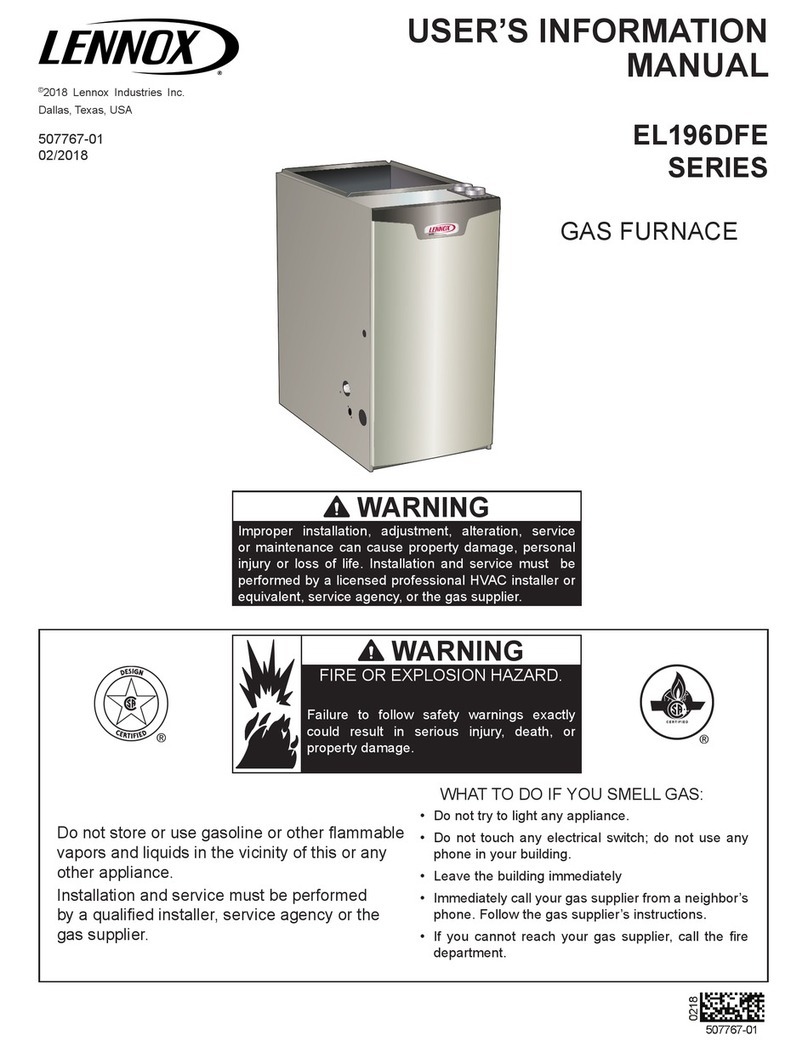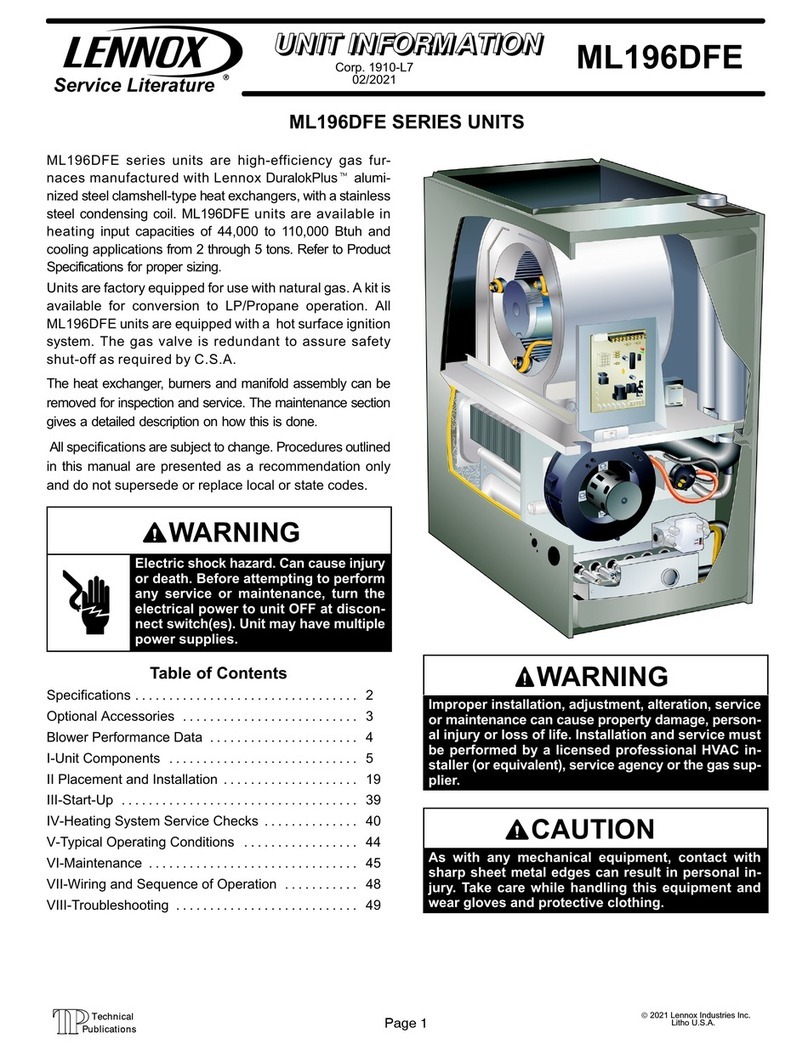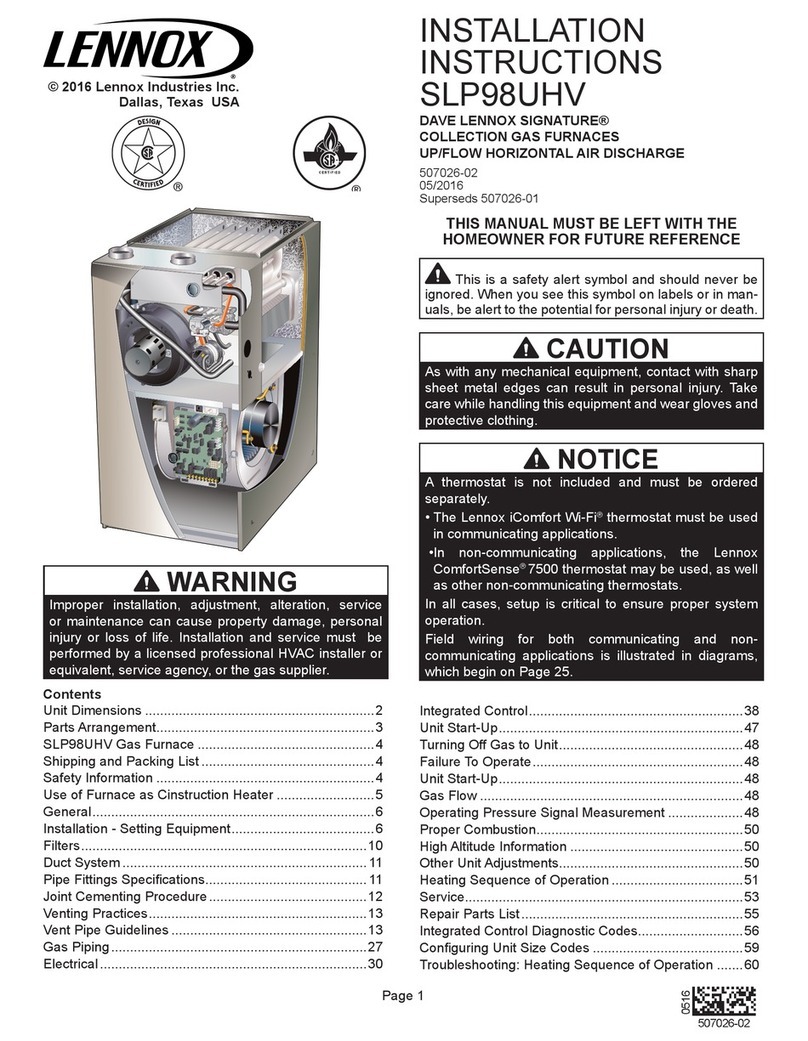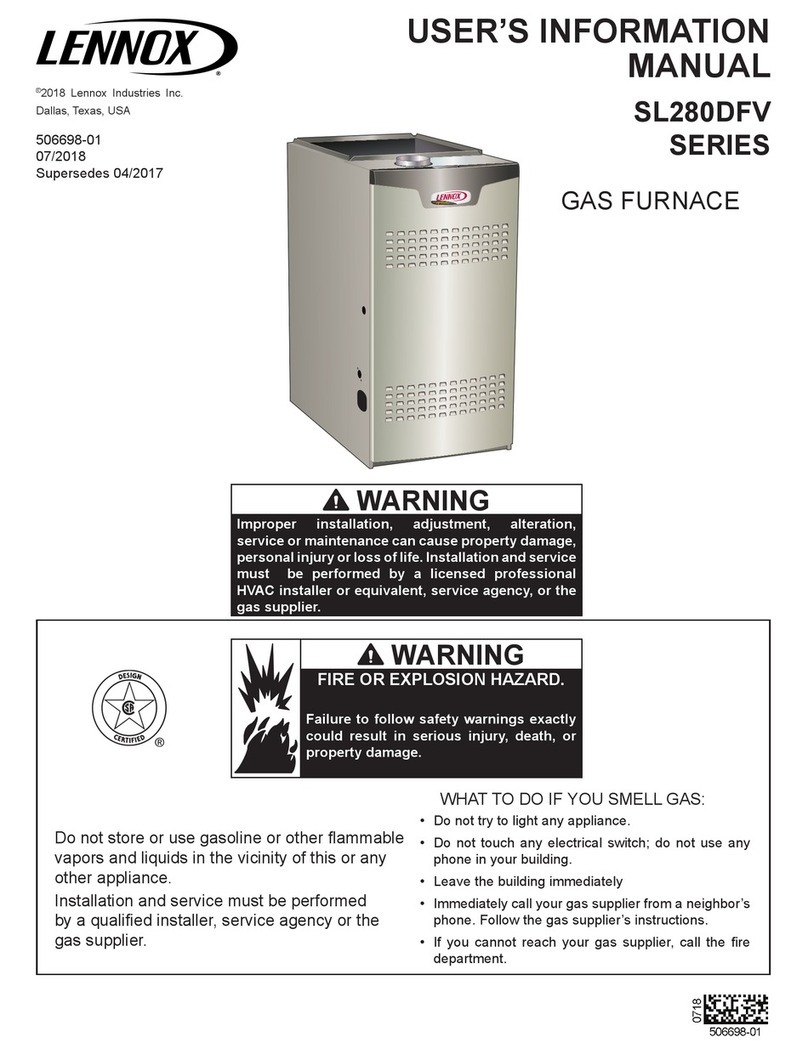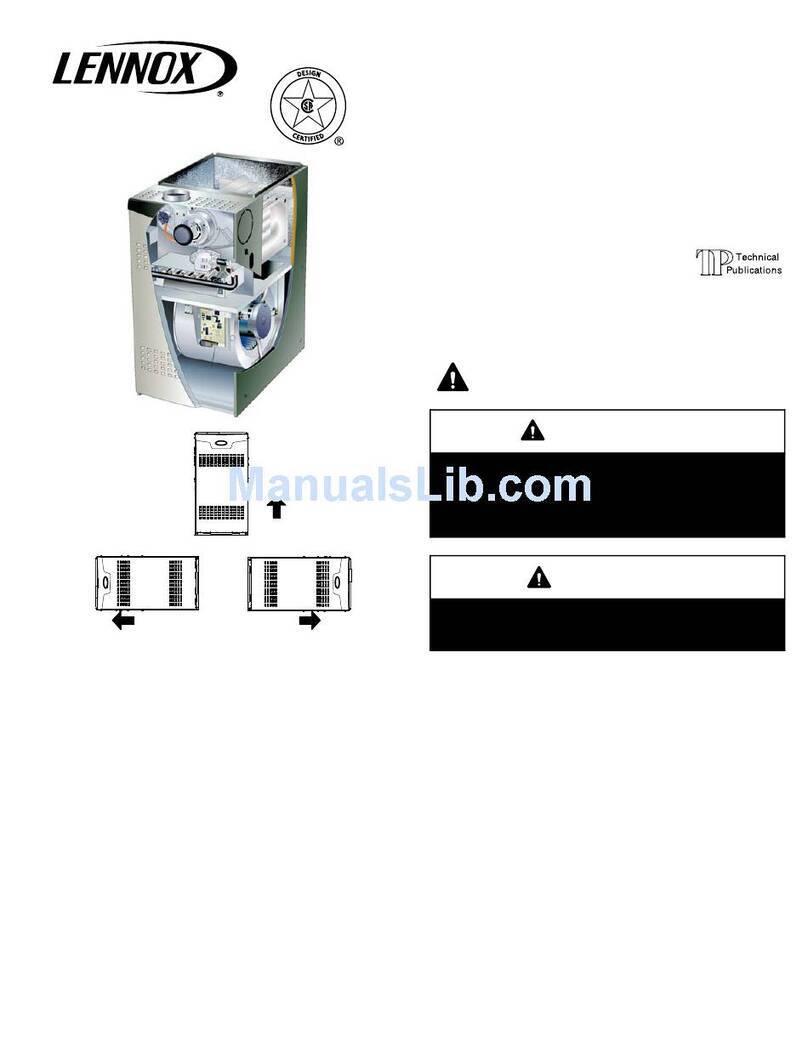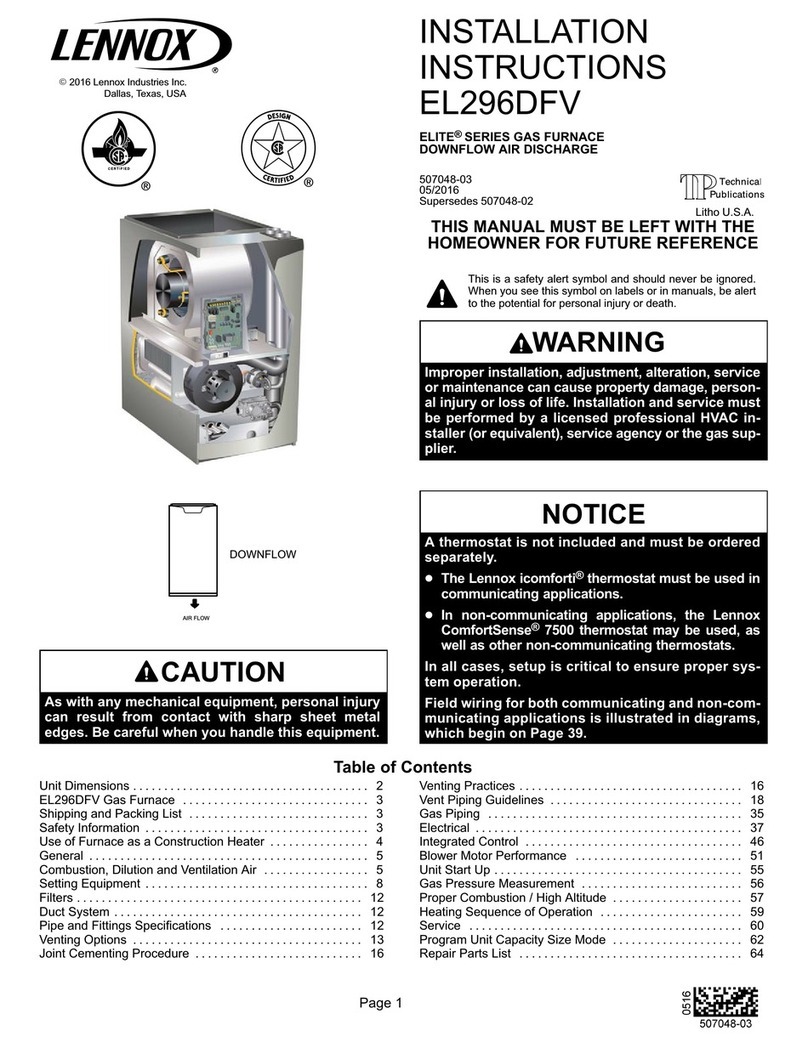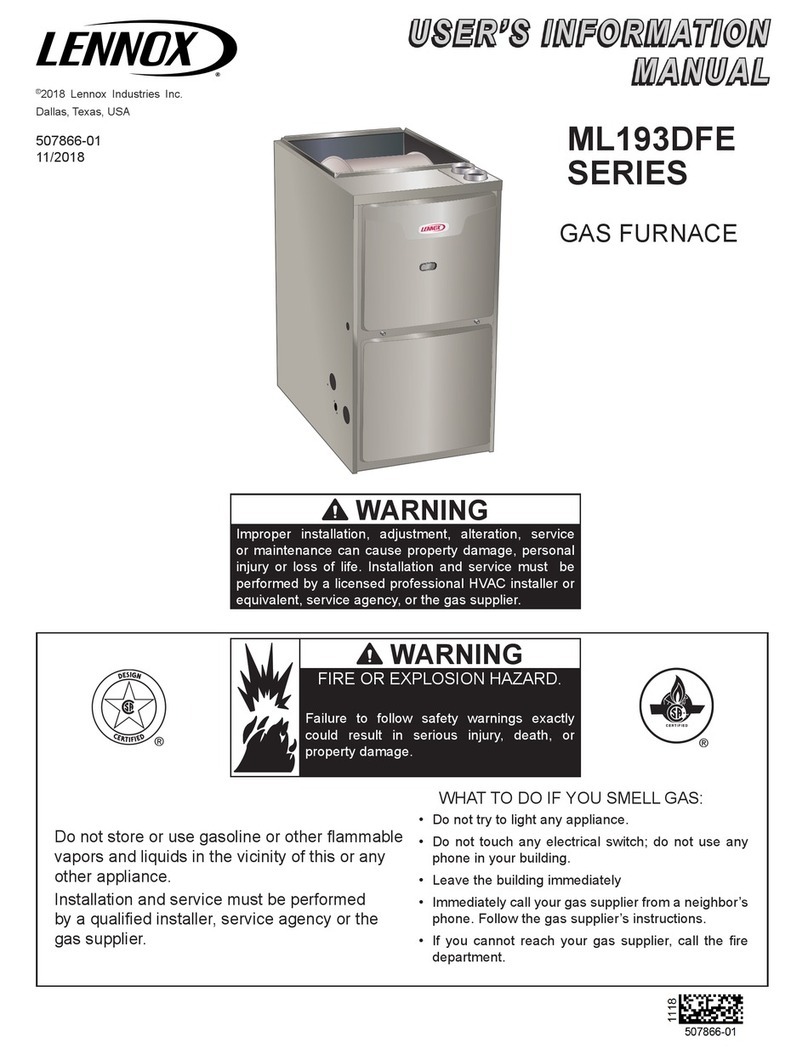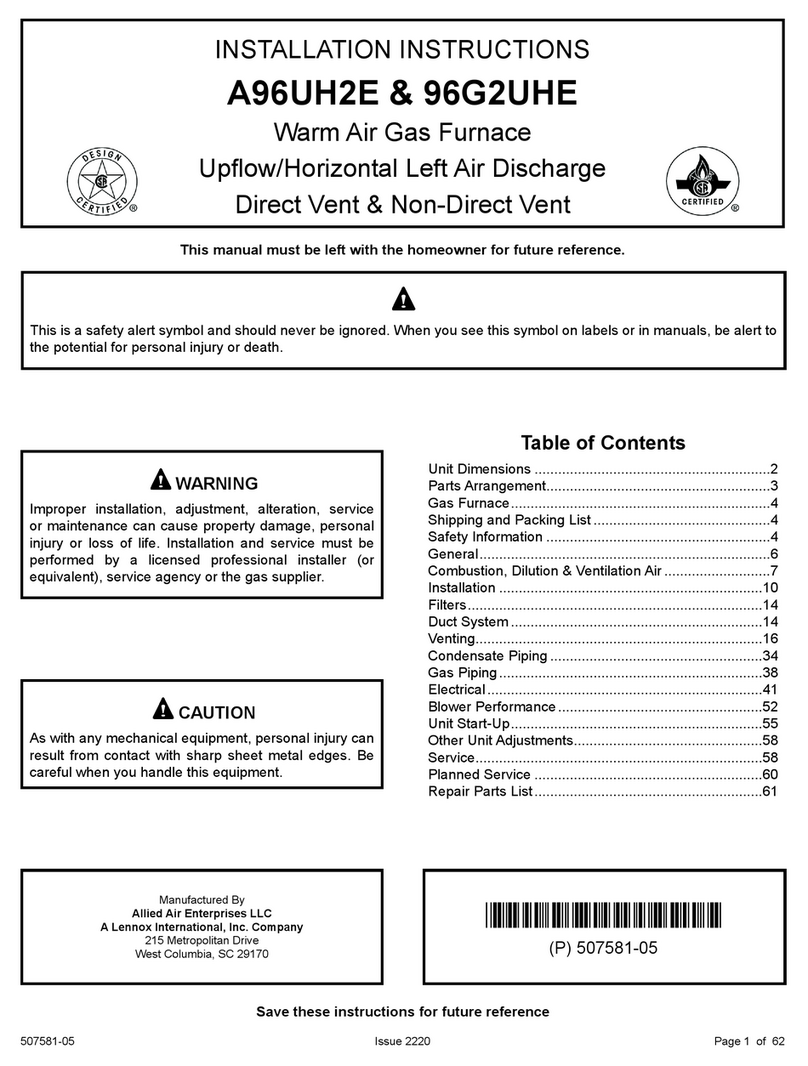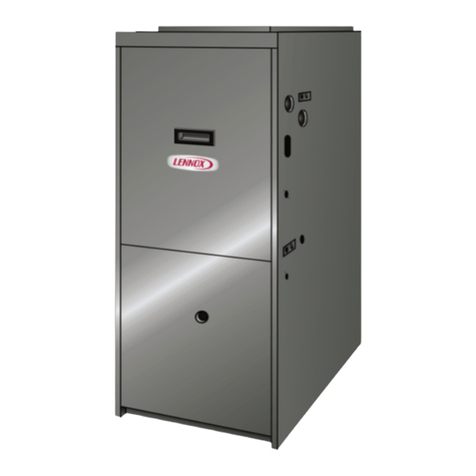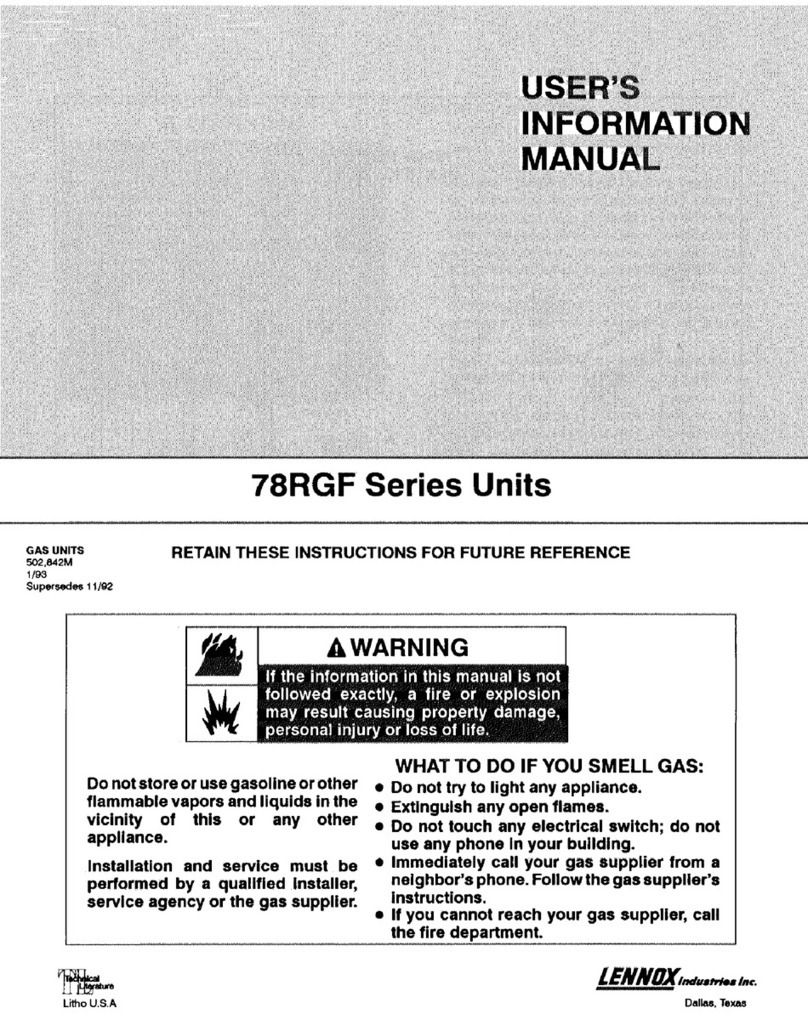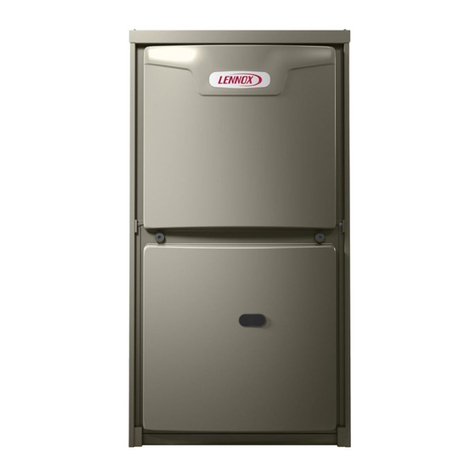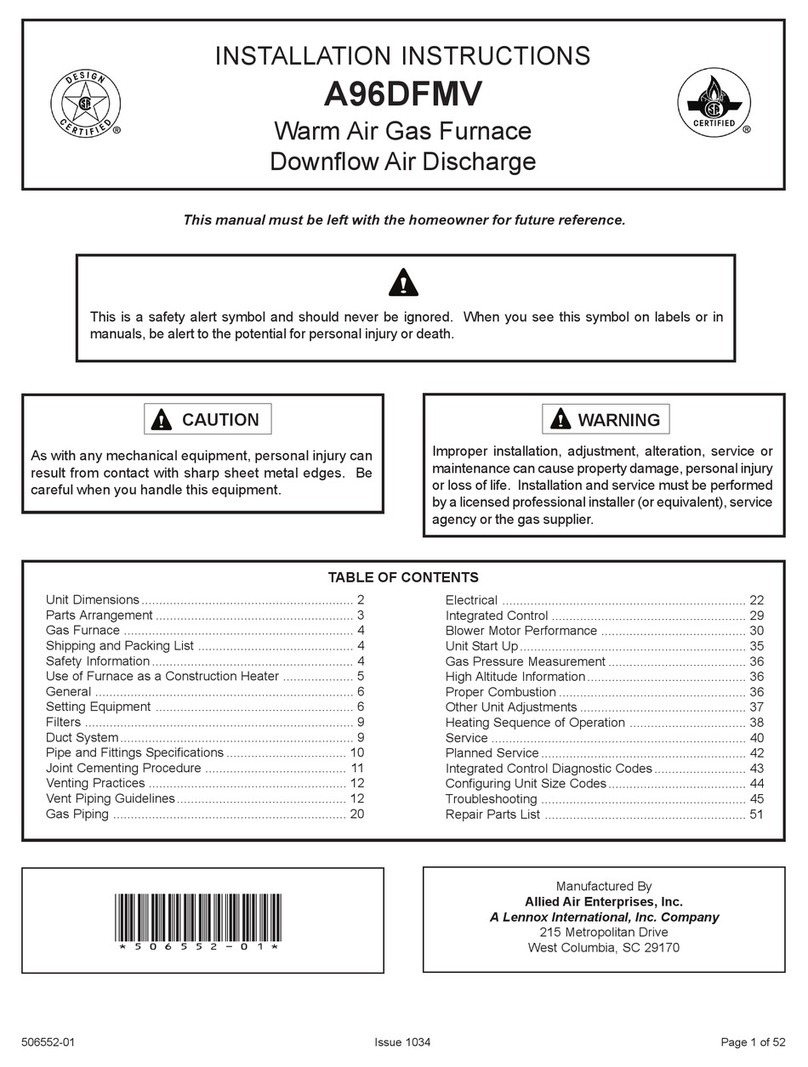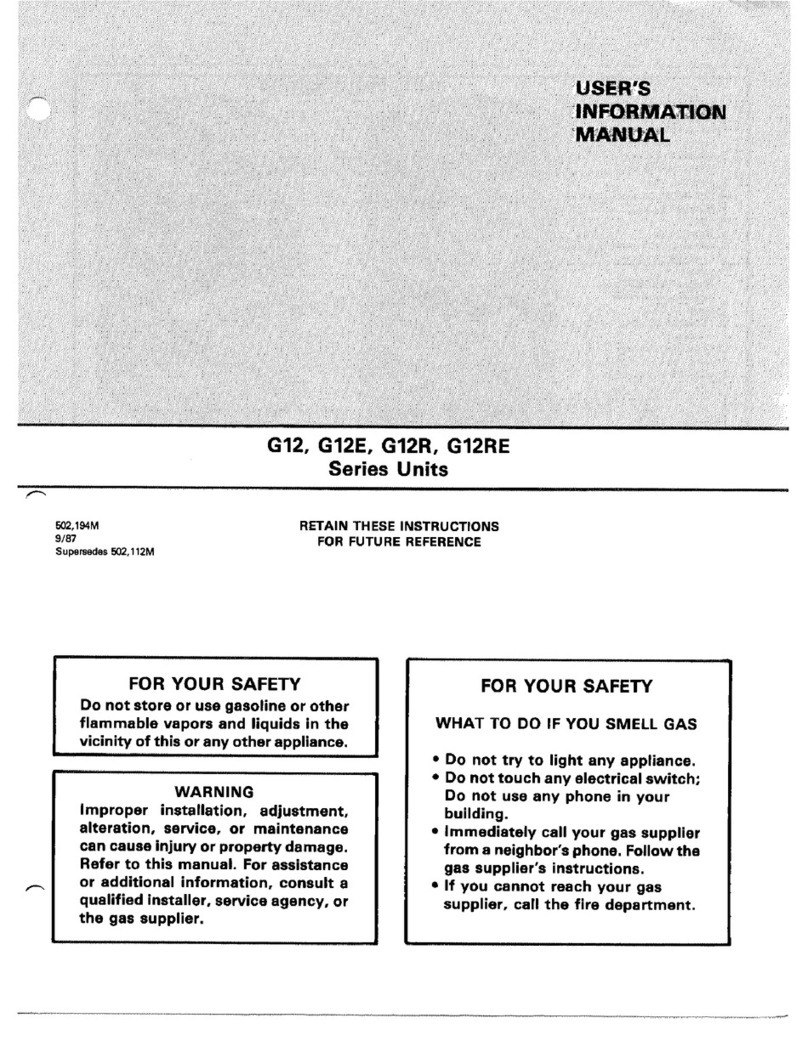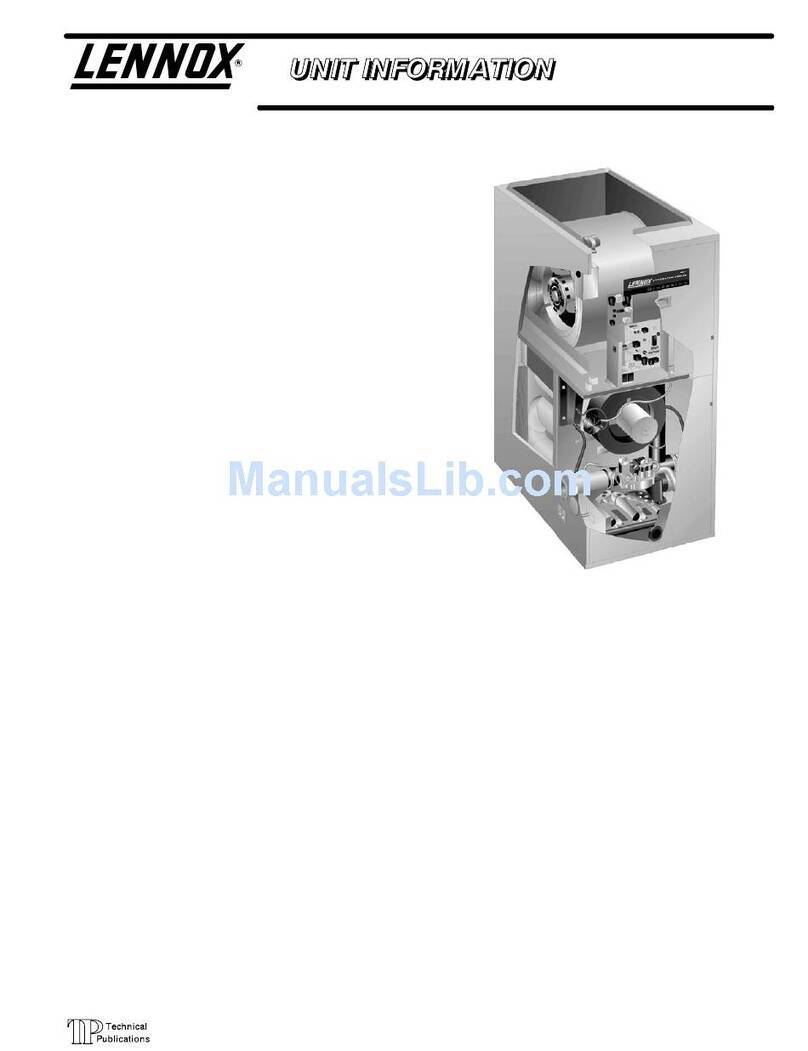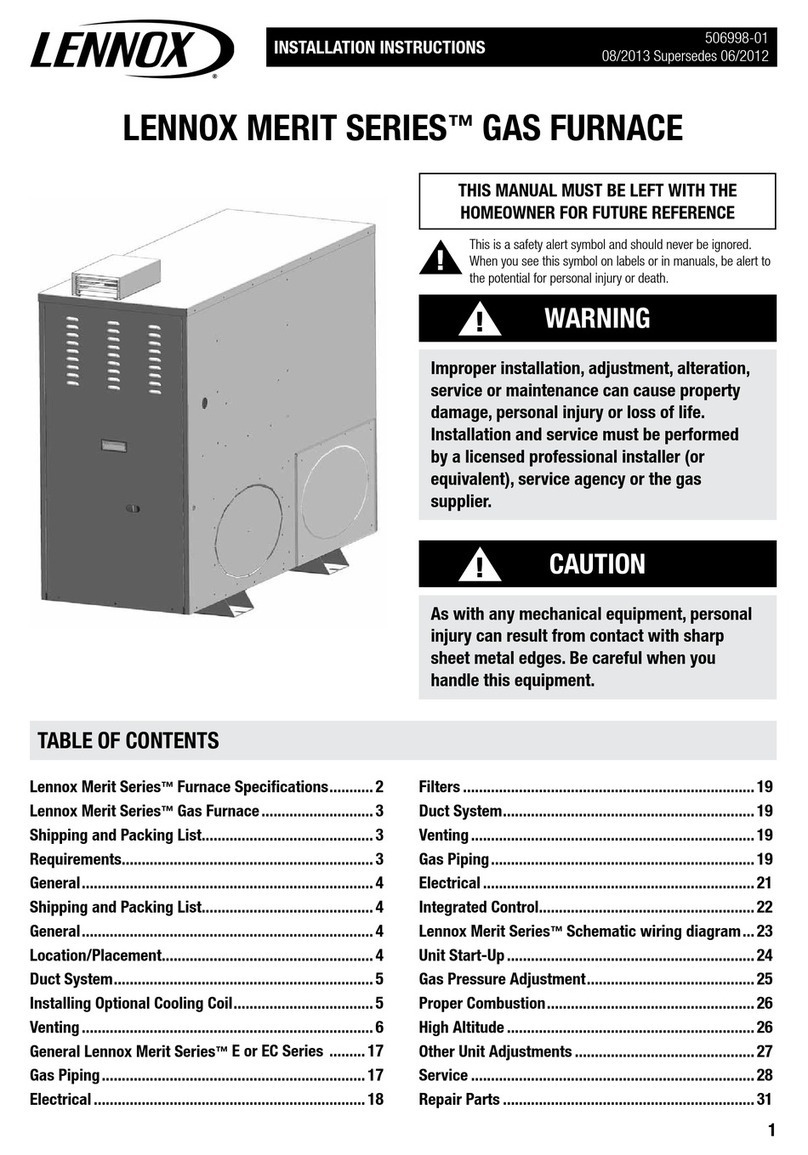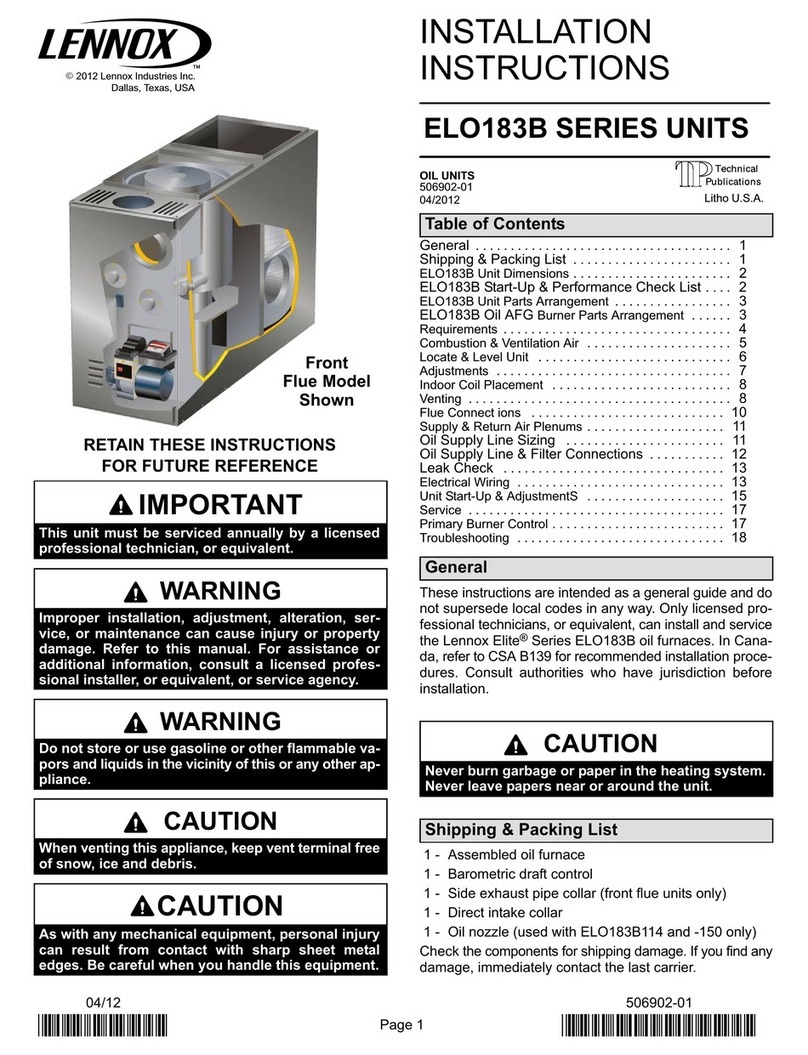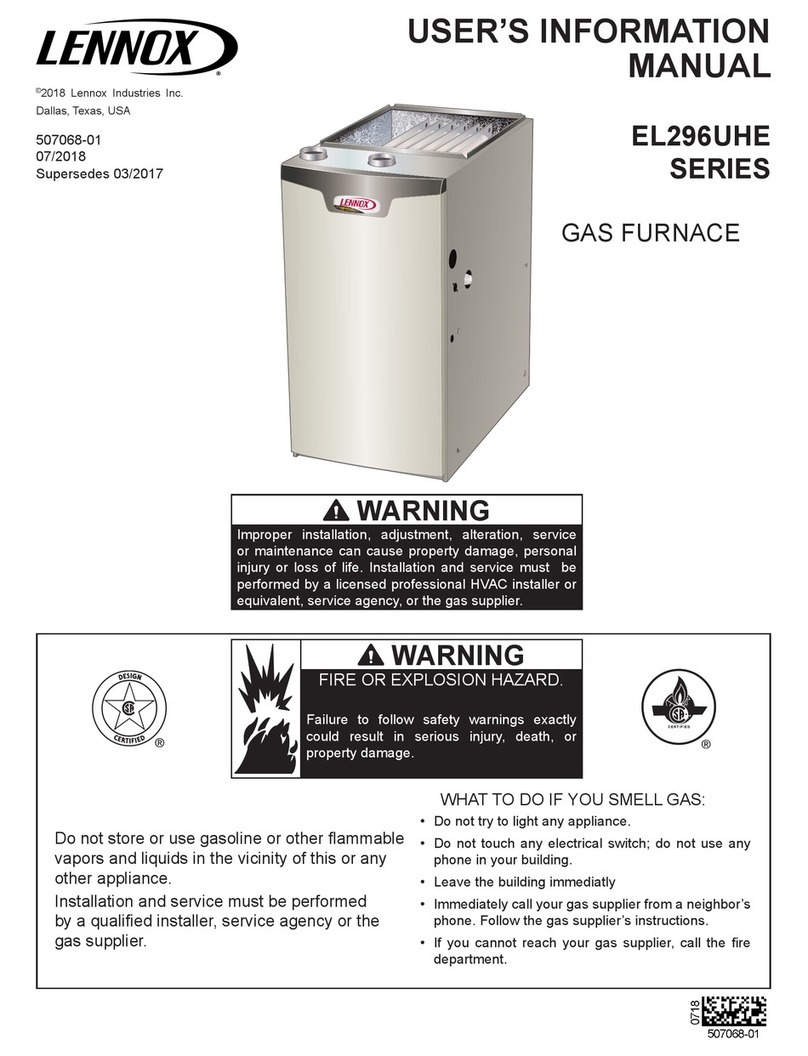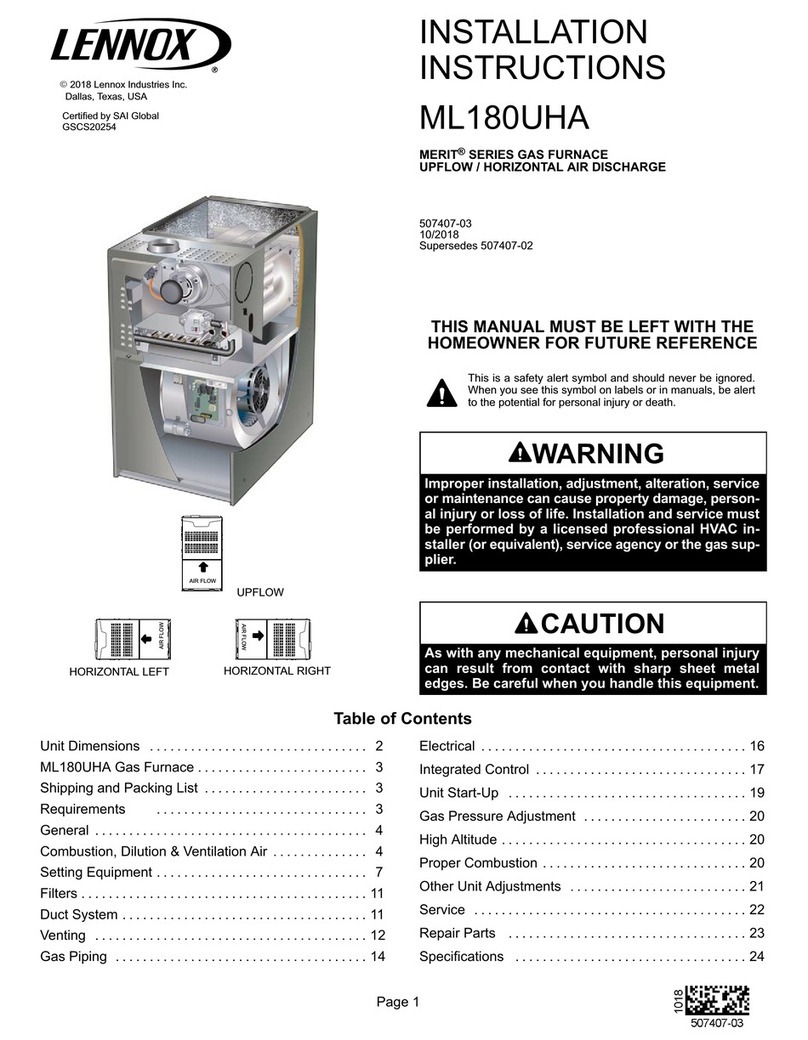
Page 10
5- Furnace Control (A3) 80UHG-1 Model
80UHG units are equipped with an integrated ignition/blower
control (EGCĆ2) which controls ignition, safety circuits,
blower operation, fan off timing, and allows for thermostat
connection and troubleshooting. The EGCĆ2 is a printed
circuit board which is di ided into two sections, 120 and
24VAC. Line oltage comes into the board on the 120VAC
side. See figure 10. Terminal designations are listed in
tables 6 and 7.
Ignition Control
80UHG units use the EGC-2 direct spark integrated
ignition control. The EGC-2 controls and monitors the
entire sequence of operation. On a call fo r he at fr o m th e
thermostat the control monitors the combustion air inĆ
ducer pro e switch. The control will not begin the heatĆ
ing cycle if the pro e switch is closed (byĆpassed). Once
the pro e switch is determined to be open, the combustion
air inducer is energized. When the differential in pressure
across the pro e switch is great enough, the pro e switch
closes and a 15 second preĆpurge period begins. If the
pro e switch does not close within 2 1/2 minutes, the conĆ
trol goes into 5 minute watchguard. After the preĆpurge peĆ
riod, the gas al e will open and ignition (spark) will be atĆ
tempted for 10 seconds. After ignition, the co nt r ol ini tiate s a
ten second flame stabilization period. The flame stabiĆ
lization period allows the burners to heat up and the
flame to stabilize. Once flame is established, the control will
constantly monitor the burner flame using flame rectification.
Flame failure response time is 0.8 seconds.
If the initial attempt for ignition fails, the sequence is reĆ
peated up to fi e times. After the fifth trial, the control goes into
Watchguard"*. During watchguard mode, the entire unit will
be deĆenergized for one hour. After one hour the control will
repeat the ignition sequence. Watchguard may be manually
reset by breaking and remaking thermostat demand.
*NOTE-If fla e is established beyond the 10 second fla e
stabilization period then lost, the control resets for five ore
ignition trials. The control can be reset five ti es during one
unsa tis f ied ther os tat de and, pr ovi ding a ax i u
of 25 trials for ignition.
Safety Circuits
During the entire heating demand the control monitors the
safety circuits. If the primary or secondary heating limits
open, the control deĆenergizes the main gas al e and
combustion air blower while the indoor blower remains enĆ
ergized. When the limit automatically resets, the ignition seĆ
quence also resets. If either of the limits trip fi e consecuĆ
ti e times during one unsatisfied thermostat demand, the
control will go into watchguard for one hour.
The control monitors main al e oltage. If oltage is sensed
when no oltage should be present, the control deĆenergizes
the combustion air inducer which terminates oltage to the
al e. The system goes into hard lockĆout which is reset only
by remo ing power to the unit.
If flame is sensed when no flame should be present, the conĆ
trol will energize the combustion and indoor blowers. The
unit will remain locked in this sequence until the flame is no
longer sensed or the main power is turned off to reset the
control.
The rollĆout circuit is also monitored by the EGCĆ2 control. If
the switch opens, the control will deĆenergize the gas
al e, combustion air inducer, and indoor blower. The
unit will remain deĆenergized until the switch is manualĆ
ly reset.
DANGER
Shock hazard. Avoid personal injury. Make sure to
disconnect power before changing fan off" timing.
Blower Operation / Fan Off Timings
Fan off" timing (time that the blower operates after the heat
demand has been satisfied) can be adjusted by mo ing the
jumper on the EGCĆ2 blower control board. Figure 9 shows
the arious fan off" timings and how jumper should be posiĆ
tioned. To adjust fan off " timing, gently disconnect jumper
and reposition across pins corresponding with new timing.
Unit is shipped with a factory fan off" setting of 180 seconds.
Fan on" time is factory set at 45 seconds following the
opening of the main gas al e and is not adjustable.
Fan off" time will affect comfort and efficiency and is adĆ
justable to satisfy indi idual applications. The fan off" timĆ
ing is initiated after a heating demand but not after a coolĆ
ing demand.
NOTEĊIf fan off" ti e is set too low, residual heat in
heat exchanger ay cause pri ary li it S10 to trip, reĆ
sulting in frequent cycling of blower. If this occurs, adjust
blower to longer fan off" ti e setting.
FIGURE 9
FANĆOFF TIME ADJUSTMENT
180 60
120 90
To adjust fanĆoff timing:
Remo e jumper from EGCĆ2 and select
one of the other pin combinations to
achie e the desired time.
TIMING
JUMPER
TIMING PINS
(seconds)
Lea e jumper off for
240 second fanĆoff timing.
